GETTING THE MOST OUT OF FOREIGN TRAVEL
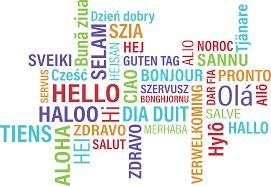
Touring in a different country can be both challenging and exhilarating. A lot of things are different from what we’re used to, including the food, road signs, and cultural norms, but often the biggest difference is the language. Most people view this as a major difficulty, but it can also be a great opportunity.
There is a stereotype of the American traveler who is boorish and rude.
Locals might take offense at a wide array of behavior, but one common mistake is traveling with no knowledge of the local language, expecting everyone to understand English and provide written materials like menus in English. Imagine someone from Austria or Switzerland coming to your workplace, speaking to you in German, and expecting (without even asking) that you will understand them and respond politely in their language. Is there a chance that you might be offended?
It’s true that in many places, English is widely spoken as a common language. This is particularly true in Europe, where it allows people whose native languages are Italian, Spanish, German, or Czech to communicate without knowing every other language spoken on the continent. But that doesn’t mean everyone you encounter will know English, or that it’s polite to simply expect them to do so.
Having a basic understanding of the language of the place you are visiting can make the trip more enjoyable in multiple ways. The simplest is that you will understand things without having to ask for help. You’ll be able to read a menu or café board and order something enjoyable. You’ll be able to go into a store and select the items you need. And you’ll be able to read the street signs and ask for directions.
In my experience, though, the biggest benefit is the way you’ll be treated by the people you meet. Make no mistake, no one is going to be fooled into thinking you’re a local. Your accent, mangled pronunciation, and clumsy phrasing will immediately give you away as a novice, but that fact that you are trying will be appreciated. The French have a reputation in the US as being rude, but I have found them to be unfailingly friendly and welcoming as long as I have greeted them with a “Bonjour!” and tried to inatiate the first exchange “en Francais”. At that point, often out of pity and amusement, they usually switch to English voluntarily.
In Prague, I greeted the owner of a café and ordered a local brew with way too much detail and obviously awful pronunciation of “pivo nefiltrované” (unfiltered beer) but got a big smile in response and a friendly service the rest of the night. Returning to a hotel one evening in Hluboka in Bohemia, the woman at the desk feigned horror when I smiled and said “Dobry noc”, which sort of translates to “Good Night”. Then she explained how that phrase was too familiar and is what a husband might say to a wife before turning the lights out. She then clarified that “Dobry vecer”, or “good evening” was more appropriate. For the rest of the stay, she and the other staff smiled when they saw me and taught me new things to say.
Of course, there is one potential danger. If you learn a few phrases and get good at pronouncing them, the locals might think you are actually fluent and respond in rapid fire torrent of incomprehensible foreign words. Yes, it’s happened to me more than a few times, but usually a sheepish response of “I’m sorry. I don’t understand.” in their language quickly rectifies the situation.
One of the great things about traveling by bicycle is that it often takes you off the beaten path, to small towns and rural areas. These can be some of the most interesting and memorable parts of a trip. The people you meet may not see many tourists and will be as curious about you as you are about them. But these are also places where fluency in English is much less common. Servers may give “Hello, can I have a menu?” a blank stare and be hesitant to return. Even if they know a little English, they may be reluctant out of a lack of confidence. But “Buongiorno. Il menu per favore” will get you off to a better start. I had a great time at a cafe in the tiny town of Zelo in Italy where it seemed like half the population was sitting out front on a warm summer evening. At first, they all claimed to speak no English, but when they saw that I was willing to try some rudimentary Italian, they felt more comfortable with their English skills. We didn’t always understand each other, but everyone had a good time trying.
Tools for the Road
Whether or not you achieve basic conversational fluency, it’s helpful to have some tools that allow you to do some quick translation on the spot. These can be digital or analog.
Smartphone Translators
Most travelers have smartphones and access to mobile data. Online translators won’t help you keep a conversation going, but they can help you understand a menu or street sign. Google has a good translator built into the search engine.
Of course, there are apps available, too. Google Translate can actually translate from your speech or based on an image captured by the phone camera. That can be helpful for street signs or menus. As you can see, the translations aren’t perfect, but they are definitely helpful.
Dictionaries

Another useful tool is a pocket dictionary or phrasebook. Readily available in just about any language, they are often divided into sections that list words alphabetically in both English and the other language.
Custom Cheat Sheets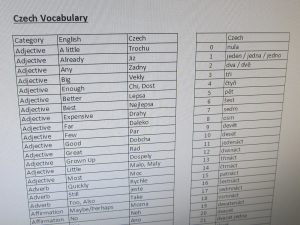
I’ve now begun putting together my own lists of words and phrases as I learn a language. I find them helpful for remembering things before I go and useful for translation while I travel.
Ways to Learn
These days, there are a lot of tools available for learning a language, including books, audio files, videos, and smartphone apps. Choosing the best approach can be a bewildering. The reality is that different methods work for different people, but I’ve experimented with a variety of options and have some thoughts that may be useful.
There are different ways we can learn….by listening, by seeing, by writing, by doing, and by repetition. For languages, I find that a combination works best.
I’ve refined these methods learning numerous languages: Spanish, French, Italian, Czech, and German. For French and German I had a head start. I took two years of French in high school and took German lesson while working for a Swiss company, but it fades quickly. I always need a refresher and come back to these methods before a trip. Of course, the languages are all starting to blend together now. I hear German and want to respond half in French and half in Czech. But there are worse problems to have.
Take Advantage of Your Library
Language products can be expensive. You could easily spend hundreds of dollars buying audio lessons and books that don’t work very well for you. Try your local library. Most of them have a variety of language materials. I’m lucky to reside in Philadelphia and have another good suburban library system nearby, so the selection is really vast. But wherever you live, it’s worth the time to see what your local branch has on hand or can get transferred from elsewhere.
Often the versions in the library are a few years (or decades) old, but don’t let that deter you. Languages don’t change that fast and you’re not trying to learn the latest trendy phrases or technology terms. The basics today are the same as they were in 1990 or 2000.
Audio Lessons
Languages are spoken. The most important way to communicate with people in a different country is to hear and understand what they are saying, and to speak and be understood by them. Audio lessons are critical, to become familiar with the way words and phrases are pronounced, and to hear them they way they are actually spoken.
When we write, we put spaces between words and use punctuation to organize thoughts. But when we speak, everything runs together. Nobody says “comma” after a word, then stops to let you reflect on how that affects the meaning of a sentence. The only way to begin to understand a language verbally is by practice and repetition.
There are lots of audio lessons out there and many of them are very good. Some are geared more for business travelers and others focus on leisure travel needs. Either way, they will familiarize you with the basics: pronouns, common verbs and their conjugation, directions, and dining.
After trying every source I could find, I’ve gravitated toward two brands: “Pimsleur” and “The Complete Idiots Guide”. (Online lessons and apps like “Babbel” also have a good reputation and may be worth trying.) If you get the CD’s, load them onto your phone so you can listen to them anywhere.
I use the two series differently and here is why:
“Pimsleur” – While Driving
Pimsleur focuses on repetition and constantly asks you to remember what you thought you just learned. It works. At first it’s surprising how hard it can be to remember a word after it’s first introduced. For me, Pimsleur’s repetition is really helpful, and it introduces new words at just the right rate. After a while, the words and phrases stick.
I like to listen to these lessons while I drive. Driving is a unique situation. You are captive in the car, but the actual act of driving is mostly subconscious. That leaves your conscious mind available to focus and learn. The driving in the background also keeps you from getting bored and distracted, which is what happens when I try to listen to lessons at home or the office. It’s a great way to be productive during a long commute or weekend travel.
Another nice feature of the Pimsleur lessons is their consistency. If you switch from one language to another, the pattern of the lessons is the same. You’ll learn the same vocabulary and phrases in the new language. The familiarity somehow makes the process easier.
One thing I find challenging about Pimsleur is that there is are no clear written companion documents. While listening to the lessons, I often struggle to grasp the pronunciation of some words. I do better with visual learning. Seeing how words are spelled helps me pronounce them and reinforces them in my memory. My solution is to keep a note pad with me while listening. Every time a new word is introduced, I jot it down, along with its English equivalent. Of course, my spelling often bears little resemblance to the correct version, but it helps me look it up later using an online translater. This is how I start developing the “cheat sheets” mentioned earlier. Please be careful about this! Trying to write down unfamiliar words while driving can be dangerous. If traffic is heavy or the road is treacherous, leave the pad on the passenger’s seat and listen to the lesson again later.
Some of the lessons introduce a lot of new words and concepts, so listening to them multiple times anyway can really help. Don’t feel bad if you get to the end of a lesson and realize you only grasped about half of it. It happens to me all the time. Just listen again. If you can get through 20 lessons before your trip, you’ll be able to hold a basic conversation.
“The Complete Idiots Guide” – On the Bike Trainer
While Pimsleur focuses on repetition, “The Complete Idiots Guide” audio lessons focus on conversations or “Dialogs”. They follow a business traveler from the airport through meetings and meals with friends. They cover a lot of useful ground. The best thing about these lessons is that they come with printed transcripts which are immensely useful because they allow you to see how every word is spelled as you hear it.
These are not the best lessons for the car. Don’t be that driver who is reading a document while heading down the road at 70 mph! You can listen to the audio while driving, but they you’re missing half of the benefit of “The Complete Idiots Guide”.
While getting ready for a trip to France, I stumbled on a win/win solution – listen to the lessons while working out on a bike trainer. The situation is similar to driving because your subconscious is occupied with pedaling but your conscious mind is capable of focusing on a lesson. Set up your trainer with a handlebar book holder for the dialogue transcripts (a lot of gym bikes already have a magazine stand), then start the lesson. It’s much better to use a cell phone with head phones than a stereo with speakers because it allows you to easily repeat a section if you missed something.
Most of the lessons are about 15-20 minutes. I usually listen to each one twice, but not in immediate repetition. On Monday, I might have finished with Dialogue 9. On Wednesday, I’ll listen to that one again then move on to Dialogue 10. Then on Friday, I’ll repeat #10 and finish with #11. Your work outs may last more than 30-40 minutes, but I find that my brain runs out of capacity after that, so I stop with the lessons, though I may keep pedaling.
I find that this technique works brilliantly on two fronts. The lessons are much more tolerable while pedaling the trainer AND pedaling the trainer is much more tolerable while listening to the lessons.
If you get through 20-30 of these “Dialogues” and 20 of the Pimsleur lessons before your trip, you’ll definitely make a good impression on the locals.
WHat to Learn
You don’t need to become fluent to make your travel more enjoyable. Set modest expectations that you can actually accomplish. Focus on the vocabulary and phrases you are mostly likely to use.
Courtesy:
First Things First: This is the introduction I often open with: “Hello. Do you speak English?”. If they say no, you can say “That’s OK” and try communicating in their language.
In French, seeking croissants : “Bonjour. Parlez vous l’Anglais?” “No, juste Francais” “C’est bon. Avez vous des croissants?”
Other essentials for courtesy: “Excuse me”, “Please”, and “Thank You”
And for clarification: “I don’t understand” and “Please speak slowly”
Practicalities:
“Where is…” and especially “Where is the toilet?”
“I would like…”, “Do you have…”, and
“How much does it cost?” and units of currency
Numbers:
1-20 is essential. 20-100 usually follows a simple pattern, so try to learn that, too.
Time:
“What time is it?” and figure out if they express time as 12 hours (3 PM) or 24 hours (15:00).
Common Verbs and Conjugation:
To be: I am, you are, we are, he/she is
PLUS: To have, To be from, To reside, To want, To go
Question Words:
Where, When, and Why
Food & Drink:
Water, Beer, Wine, Coffee, and Tea
Meat, Beef, Chicken, Pork, Fish
Vegetables, Fruit, Beans, Apples, and other specific examples
Salad and Soup
Rice, Potatoes, and Pasta
Bread and Rolls
Eggs
Vegetarian, Vegan, and Gluten-Free (as needed)
Practice Makes Perfect
Don’t expect this to be easy, but it can be fun and rewarding. I find the hardest part to be understanding what people are saying. With written words, you have time to decipher the meaning, but spoken words come rapid fire. The only way to get good at understanding is practice. If you are traveling with friends, convince them to learn the language too, then practice together at dinner, on training rides, and in texts and emails.
When you arrive for your tour, jump right in and start speaking. You’ll be glad you took the initiative.


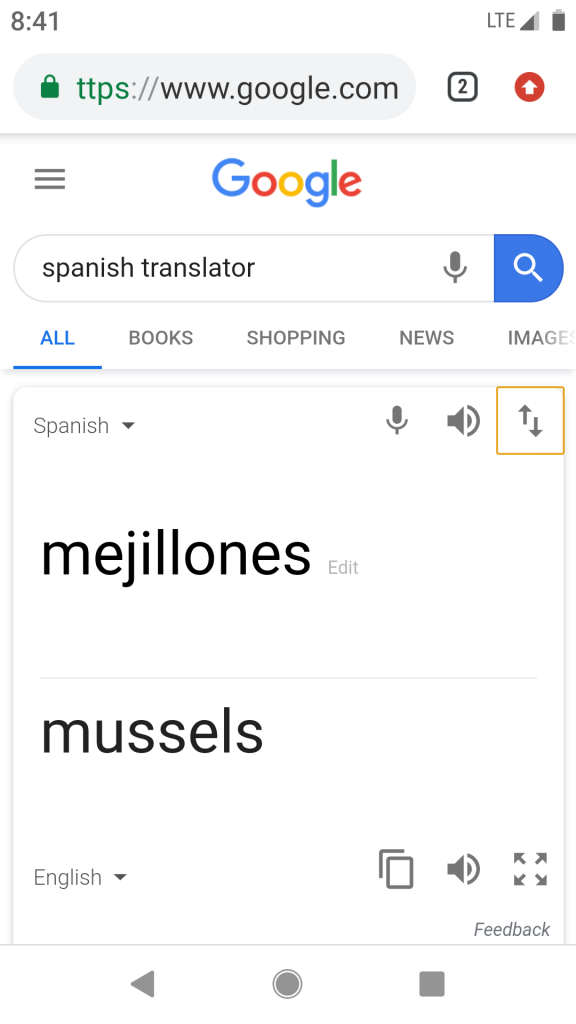
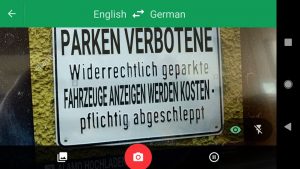

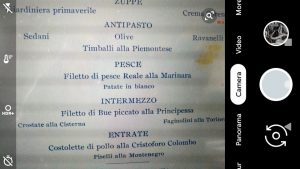
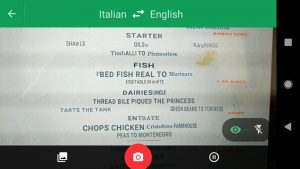
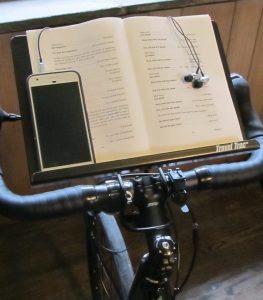
Shelly says:
Google’s free service instantly translates words, phrases, and web pages between English and over 100 other languages.